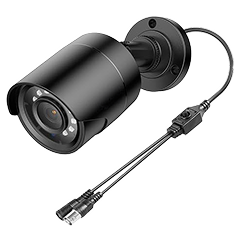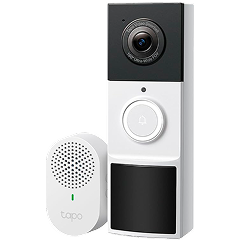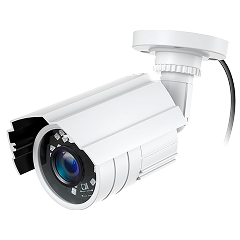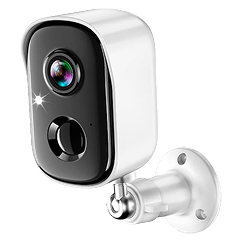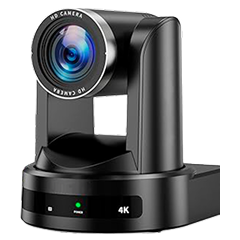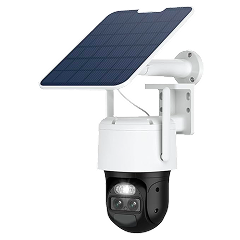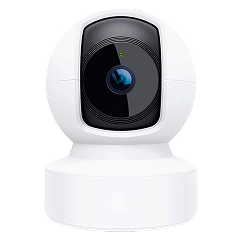I’ve got three Ring Stick cameras running inside my house, two in the main living areas and one out in the garage. What surprised me was how different these indoor units are from my outdoor Ring cameras.
The outdoor ones just watch for trouble and package deliveries, but my indoor cameras turned into something I use all day long. I talk to my kids through them when they get home from school, check on the dog during storms, and disable them when we’re home so nobody feels watched.
The thing is, most advice about security cameras assumes you’re putting them outside to catch burglars. But indoor cameras sit in your personal space, they run constantly without weather problems, and they become part of how your family communicates.
Even my garage camera was trickier than expected; the distance messed with WiFi signals, and I had to figure out how to tell the difference between our cars and someone breaking in. I’m going to walk you through what actually matters when you’re shopping for cameras that live inside your house.
Video Quality and Resolution for Indoor Monitoring
The picture quality you actually need depends on your room size, not the specs sheet marketing teams love to push.
Resolution Needs for Indoor Spaces
I went with 1080p on my Ring cameras, and honestly, they work great for seeing who’s 8in the living room, but terrible for reading anything on my computer screen from across the office.
Everyone talks up 4K like it’s magic, but you probably don’t need it for most rooms. Plus, it absolutely destroys your internet connection. At 15 feet, I can tell exactly who’s walking around with 1080p. But if you’ve got a huge open floor plan or you’re trying to watch for someone messing with small valuables, then 4K might be worth the extra money and bandwidth hit.
Field of View Considerations
Wide-angle lenses looked great on paper until I installed one and saw how distorted everything looked. My hallway camera sees 130 degrees, which sounds impressive, but people standing near the walls look completely warped.
The living room camera only goes 110 degrees, but faces look normal in the center. Corner mounting works better with wider angles, but wall mounting needs narrower fields to avoid distortion. I gave up trying to capture every corner and focused on where people actually move around.
Low-light Performance Indoors
Indoor lighting changes constantly, and standard infrared night vision creates grainy footage that’s useless for identification. When the sun goes down, my Ring cameras flip to infrared mode, and the picture quality becomes completely useless.
I couldn’t identify anyone in the footage, so I ended up installing motion-activated LED strips in the main areas. Color night vision costs more money, but it actually works when there’s some light around. It boosts whatever light is already there instead of flooding everything with infrared.
If you’ve got street lights coming through windows or leave some lamps on, color night vision will give you way better footage for identifying faces and reading details.
Power Source and Installation Options
Hardwired indoor cameras outperform battery units in every way that matters for continuous monitoring. My Ring Stick cameras plug into wall outlets, which means no battery anxiety and full-time recording capability. Battery cameras make sense for temporary monitoring or rentals, but indoor cameras need to work 24/7 without maintenance breaks.
Power over Ethernet takes this further; my planned UniFi upgrade will use PoE to eliminate separate power adapters while providing rock-solid network connections that WiFi can’t match.
Installation flexibility depends on your home’s existing infrastructure and technical comfort level. Wireless cameras let you place them anywhere with decent WiFi coverage, but I’ve learned that “anywhere” shrinks quickly when you test actual signal strength.
My garage camera required a mesh network extender because it was too far from the main router, and even then, video quality drops during peak internet usage. Running Ethernet during construction or renovation opens up better camera options, though most people won’t tackle that retrofit project.
Network connectivity requirements:
- 2-4 Mbps upload bandwidth per 1080p camera during active recording
- 5GHz WiFi band for better performance, though range suffers through walls
- Mesh network nodes for properties with WiFi dead zones
- Ethernet connections eliminate bandwidth competition with other devices
- Test actual upload speeds at each camera location before installation
Motion Detection and AI Features
Person and pet detection transformed my Ring cameras from notification spam generators into useful security tools. Without AI filtering, my cameras triggered dozens of alerts daily from shadows, ceiling fans, and my dog wandering around.
The AI-powered detection distinguishes between actual people and random motion, though it still occasionally flags my dog as a person at night. More expensive cameras with advanced AI can recognize specific family members, but even basic person detection cuts false alerts by 90% compared to simple motion sensing.
Setting up motion zones properly took weeks of fine-tuning, and it’s the most important configuration step for indoor cameras. I had to exclude high-traffic areas like the kitchen walkway where family members constantly pass, while keeping coverage on entry points and valuable items.
My living room camera ignores the couch area during TV time but watches the front door and electronics cabinet. Night sensitivity needs different settings than daytime since infrared changes how motion appears to the camera. I learned this after getting alerts every time the heating system kicked on and created air currents.
Pan/Tilt/Zoom Capabilities
PTZ cameras sound appealing for indoor use since one unit can theoretically cover an entire room, but I don’t recommend them for most home applications. The mechanical components add failure points, drain more power, and create noise during operation that’s annoying in quiet indoor spaces.
More importantly, PTZ cameras can only watch one direction at a time, so you’ll miss activity elsewhere while the camera is focused on tracking movement. My Ring cameras stay put, watch the doors and important areas, and don’t have moving parts that break. With my outdoor cameras already handling perimeter security, these fixed indoor units work better than any PTZ camera roaming around.
PTZ cameras in homes make me uncomfortable. A camera that moves and zooms could end up recording private moments you never intended to capture. My fixed Ring cameras stay pointed at the same spots, so everyone knows exactly what they’re watching.
For home use, I’d rather have cameras covering the front door area and maybe the kids’ playroom for when I need to step out for a minute. You want consistent coverage of specific areas, not some camera wandering around. A pair of basic fixed cameras costs less than most PTZ models and has fewer mechanical parts to fail.
Two-Way Audio and Communication
I use the two-way audio more than any other feature on my Ring cameras. When the kids get home from school, I can talk to them. During thunderstorms, I calm down the dog.
Indoor sound quality matters more because you’re having real conversations, not just yelling warnings. My living room camera sounds clear for normal talking, but the garage camera is muffled, and I have to raise my voice.
Key audio considerations for indoor use:
- Speaker clarity matters more than volume for comfortable conversations
- Microphone sensitivity should filter household noise, like HVAC systems and fans
- Echo cancellation prevents feedback during two-way communication
- Background noise from appliances affects placement decisions
- Consider family privacy when positioning cameras with always-on microphones
Local Storage vs Cloud Options
I compared different storage methods after using Ring and researching alternatives:
Local storage gives you complete control over your indoor footage, which matters more for private spaces than outdoor perimeter monitoring.
Privacy Features and Security
Local processing and end-to-end encryption matter more for indoor cameras than any other feature because these devices sit in your most private spaces. My Ring cameras upload everything to Amazon’s servers, which means strangers could theoretically access footage of my family’s daily routines.
Cameras with local processing keep your data on your network, while end-to-end encryption prevents anyone—including the manufacturer—from viewing your footage. I’m planning to upgrade to UniFi specifically because their cameras can operate entirely offline while still providing remote access through secure tunnels.
Privacy shutters and LED indicators help you know when cameras are active. Privacy shutters physically block the lens with a sliding cover, while LED lights show recording status. My Ring cameras have tiny LED lights that glow during recording, but they’re hard to see in daylight. Some cameras let you disable LEDs entirely, which sounds convenient until you forget the camera is recording.
Access control becomes complicated when multiple family members need camera access. I share my Ring account with my wife, but giving camera access to house sitters requires careful permission management. Guest accounts should have limited viewing windows and no ability to download footage.
The best systems let you create temporary access codes that expire automatically rather than sharing your main account credentials with everyone who might need to check the cameras.
Mobile App Quality and Daily Use
The mobile app becomes your primary interface for indoor cameras since you’ll check them multiple times daily, and a poor app makes even excellent hardware frustrating to use. My Ring app loads live video quickly and handles two-way audio without lag, but the motion zone setup interface is clunky and requires multiple attempts to get boundaries right.
Since I check my indoor cameras multiple times every day—looking for the kids, watching the dog, checking on deliveries—I need an app that works smoothly when things get hectic, not one loaded with features that don’t work right.
Smart Home Integration
Connecting indoor cameras to voice assistants turns them into home automation hubs. My Ring cameras work with Alexa, so I can ask to see the living room on Echo Show devices or enable privacy mode with voice commands. Motion detection can trigger smart lights, and cameras can announce arrivals through connected speakers.
Automation scenarios make indoor cameras genuinely useful for busy families rather than just passive recording devices. My Ring cameras switch to “home” mode when our phones connect to WiFi, turning off indoor recording while outdoor cameras stay active. At night, motion detection turns on pathway lights and sends alerts only to my phone so my wife doesn’t get woken up.
Camera Placement
Here are the top mounting solutions for indoor cameras:
- Tabletop stands work well for temporary placement and easy repositioning
- Magnetic mounts offer flexibility but limited weight capacity for heavier cameras
- Wall anchors must match your wall type—drywall anchors fail with heavier cameras
- Corner mounts provide wider coverage angles but complicate cable management
- Ceiling mounts hide cameras better but reduce facial identification capability
- Adhesive mounts work for lightweight cameras but leave residue when removed
- Outlet-mounted cameras integrate power and positioning but limit placement options
Common Indoor Camera Mistakes
These setup errors cost me time and security coverage during my three years with Ring indoor cameras:
Placement and technical mistakes:
- Ignoring WiFi dead zones in certain rooms—my garage camera needed a mesh extender, I should have planned from the start
- Over-tuning motion sensitivity settings—I cranked up alerts, thinking more notifications meant better security, then ignored the app entirely
- Forgetting to test recording quality during peak internet hours—cameras work fine during the day, but turn choppy between 7-10 PM
- Positioning cameras where they accidentally capture private areas—learned this lesson when guests felt uncomfortable in the living room
- Leaving cameras active during family gatherings—nothing kills a dinner party like a visible recording device
Choosing the Right Indoor System
Fixed cameras positioned at key entry points and activity areas work better than complex PTZ systems for most homes, and multiple budget cameras often outperform single expensive units with fancy features.
My Ring stick cameras cover the front door view from inside, the main hallway, and the garage entry; three strategic spots that catch anyone moving through the house. For families with young children, a dedicated camera in the playroom provides peace of mind during quick trips to other rooms, while you should avoid bedroom cameras entirely to maintain privacy boundaries.
The subscription versus local storage decision depends on your technical comfort level and privacy concerns. I pay $10 monthly for unlimited Ring cameras, but after three years of subscription fees, I’m switching to UniFi cameras that store everything locally. Start with fewer cameras than you think you need, test them in different lighting, then add more once you understand how they fit your family’s routine. Check our main guide for broader camera brand information and security camera basics.


